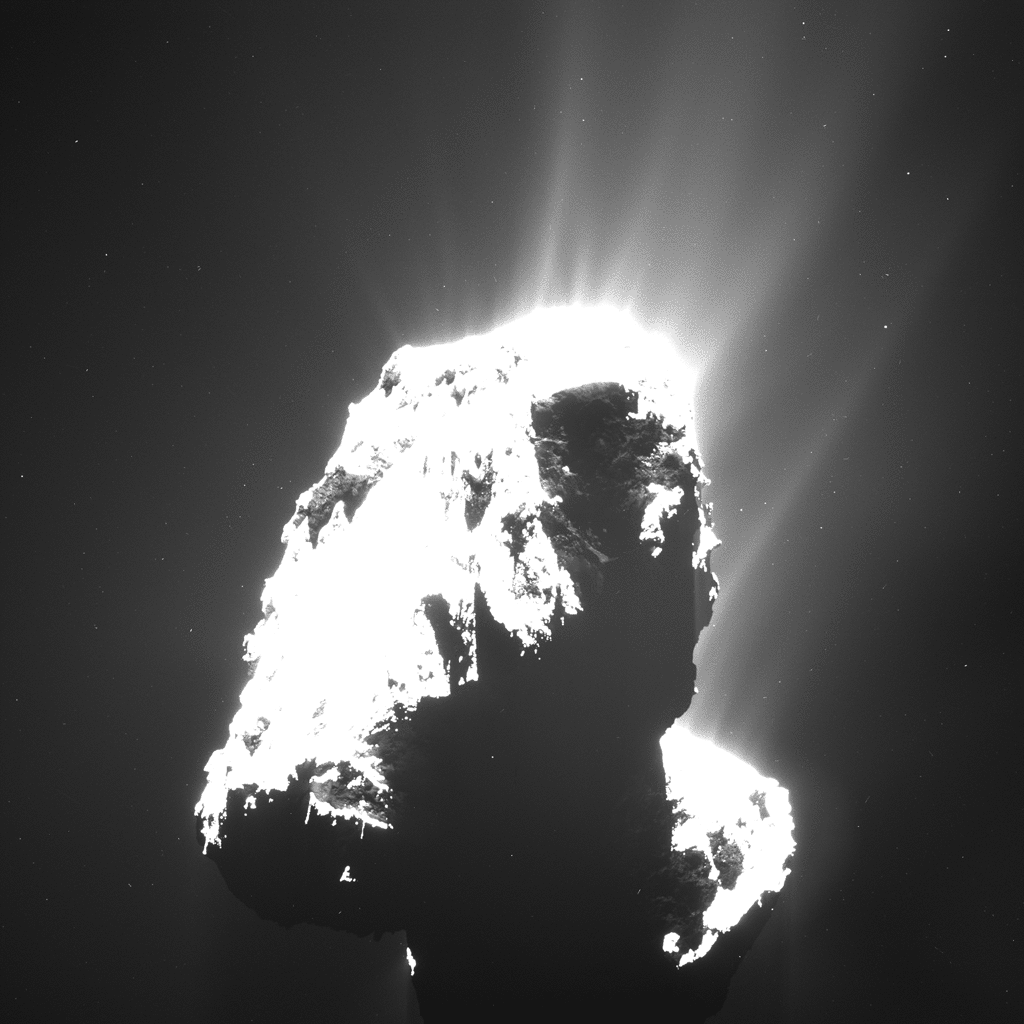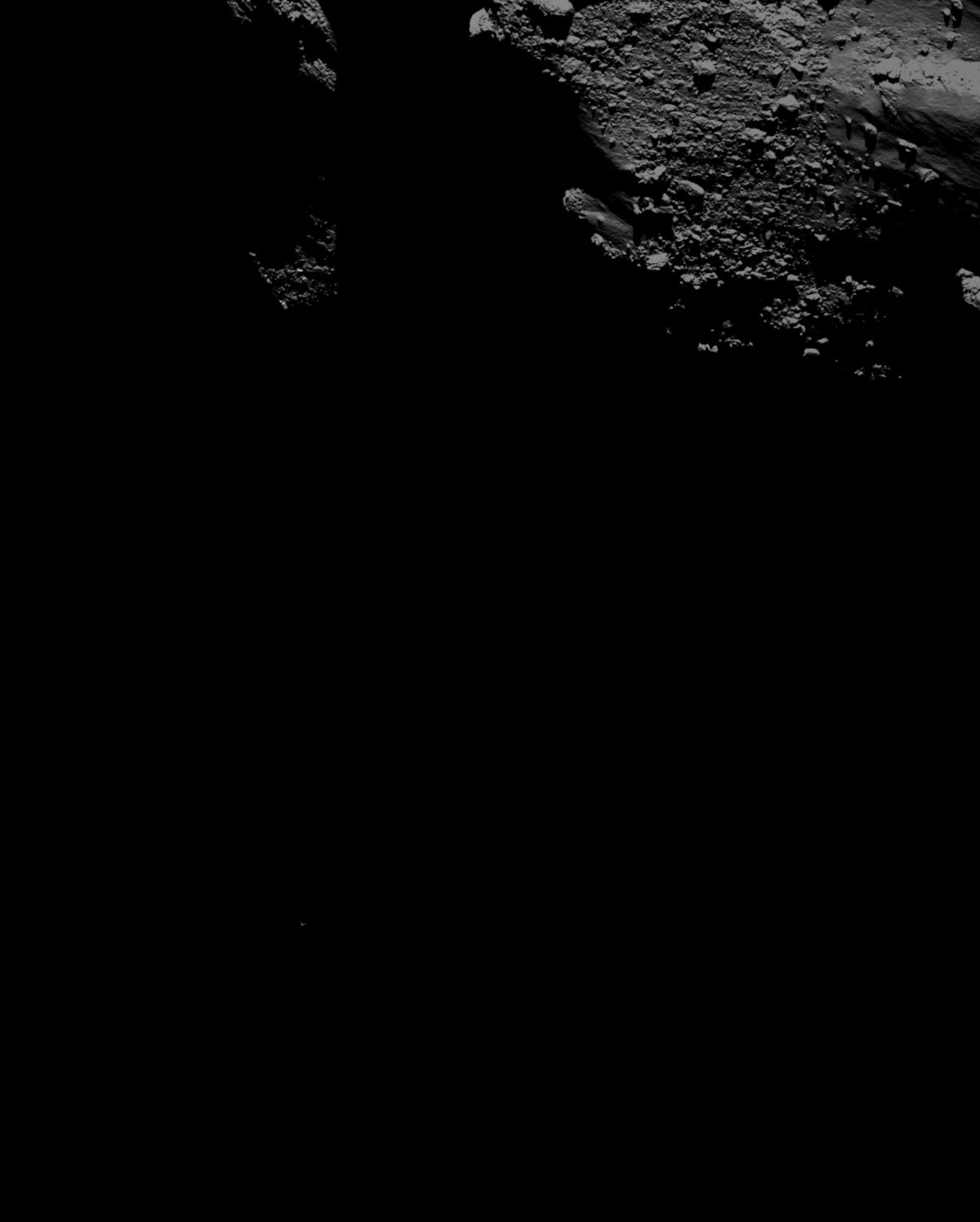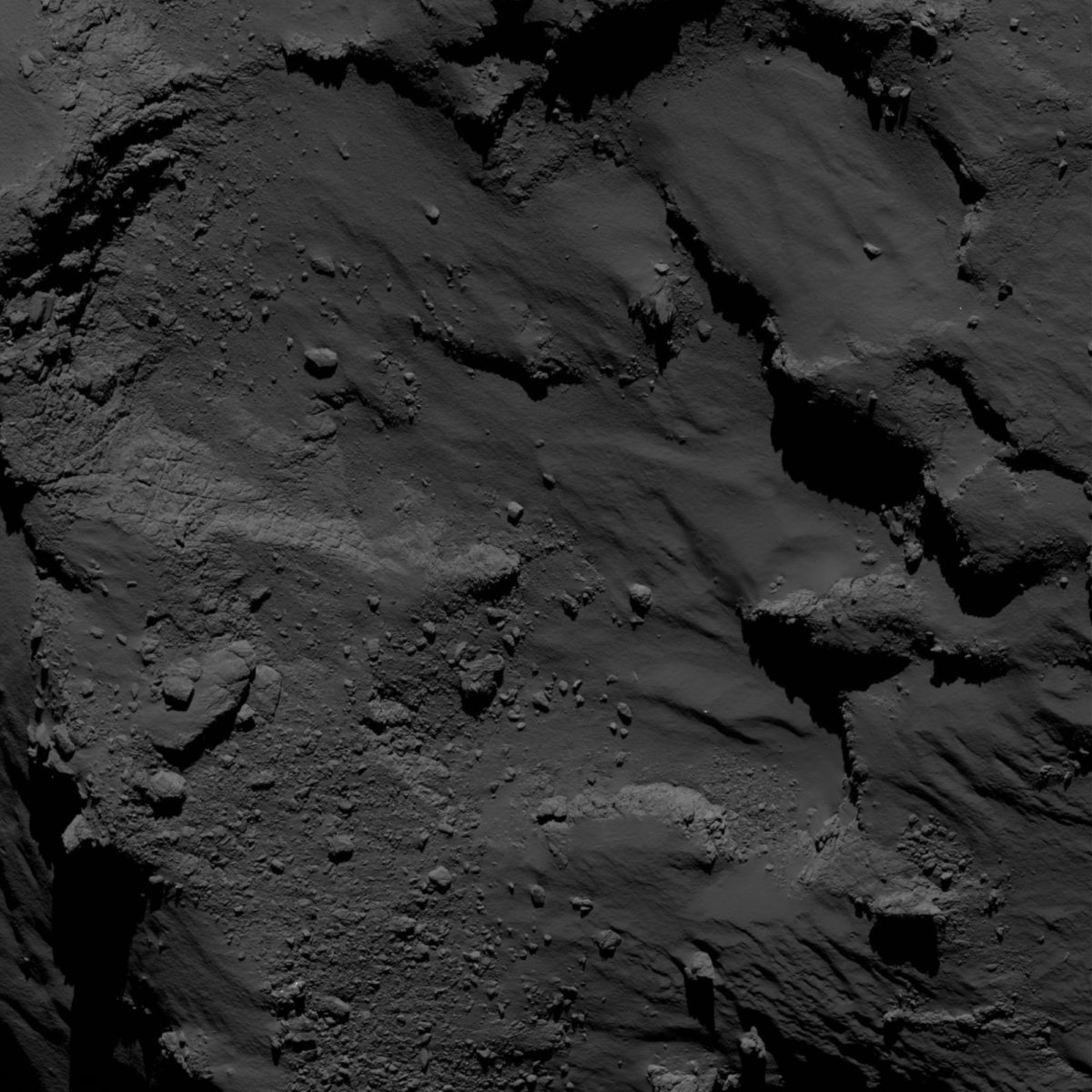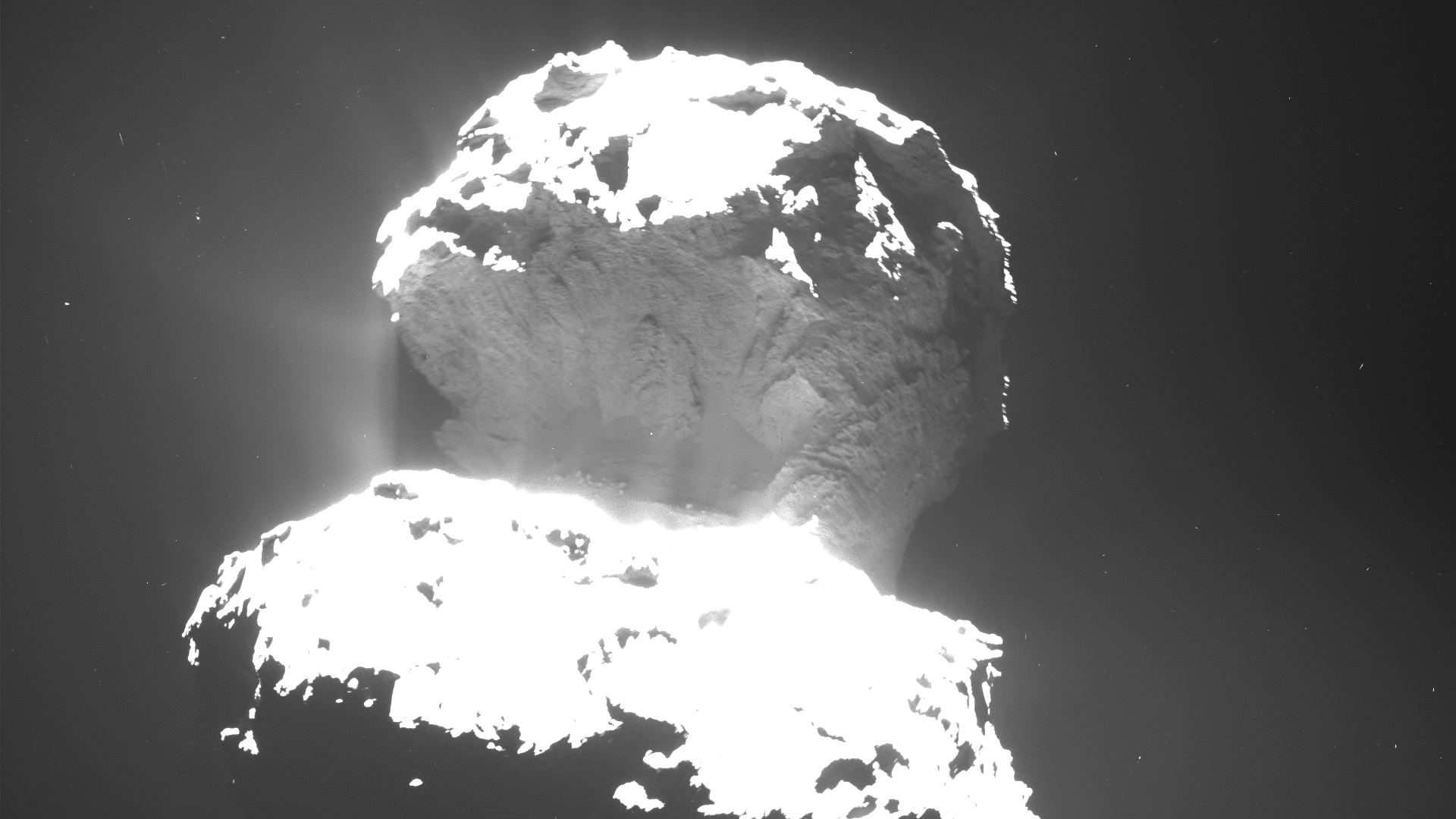Emily Lakdawalla • May 11, 2016
A feast of new OSIRIS photos from comet 67P
Last week, the Rosetta mission released a large quantity of science data to the worldwide public. The release included data from many of its instruments, but I only have eyes for one of them, at least initially: OSIRIS, the high-resolution camera. The new image data covers the mission through December 19, 2014, which means that it covers two especially important periods. One of them was the Close Observation Phase of October 15 to 31, 2014, when Rosetta surveyed the comet from a height (measured from the comet's center) of only 10 kilometers. At that range, OSIRIS Narrow-Angle Camera pixels subtended fewer than 20 centimeters, giving us incredibly detailed views. And then, of course, was landing day on November 12, when OSIRIS watched as Philae fell toward the comet, landed, and then bounced.
Before I post a ton of pretty pictures, let me tell you how you can browse the data for yourself. Here are the official sites:
- ESA released it through their easy-to-use Archive Image Browser
- You can also bulk download it through ESA's Planetary Science Archive or the Small Bodies Node of NASA's Planetary Data System
But as always I made my own browse pages that provide information on the filter choices and interweave the Narrow-Angle, Wide-Angle, and NavCam data. My pages are split up into mission phases:
- Far Approach Trajectory (July 2-August 6, 2014)
- Close Approach Trajectory (August 6-September 10, 2014)
- Global Mapping Phase (September 10-October 15, 2014)
- Close Observation Phase (October 15-31, 2014)
- Lander Delivery Phase (October 31-November 21, 2014)
- Escort Phase (November 21, 2014-)
Without further ado, here are some of my favorite things from the latest data release. User "Herobrine" at unmannedspaceflight.com put together this cool spinny animation:

I thought it would be fun to take that animation and align it on the stars I could see in the background:

It was neat to see the full science-quality images of the lander. I put together this 2-image mosaic showing the lander floating in space above the comet's surface ("above" here referring to the local gravity gradient; in the photo, the teeny lander is near the bottom left, off in space). You have to click through twice to enlarge it to its full resolution in order to appreciate all the detail on the little lander. In general, you need to click through to enlarge all these images to truly appreciate them. OSIRIS has a much larger CCD than most previous space cameras -- a 4-megapixel CCD, 2048 pixels square.

Here's another view of the lander afloat above the surface. A postage stamp version of this photo cropped around the lander was released by ESA shortly after the landing, but I don't think I've never seen the full-resolution views with the teeny tiny lander over the huge expanse of comet before. In the caption to the photo I give a clue to where the lander is -- see if you can find it without reading the caption.

But enough staring at the lander; let's check out those amazing views from the Close Observation Phase, where the terrain breaks out into all kind of fascinating detail. Here's a small sampling. Almost all of these observations were actually taken in color, through many different filters; I didn't have time to try to process them into color views by warping one image to match the next. I did try to do some 3D processing but the 3D anaglyphs were not as easy to make as they were for the period when Rosetta was farther away from the comet.







So very cool. I hope that some of you explore the data through the links at the top of this post and see for yourself what Rosetta saw in 2014!

Support our core enterprises
Your support powers our mission to explore worlds, find life, and defend Earth. You make all the difference when you make a gift. Give today!
Donate

 Explore Worlds
Explore Worlds Find Life
Find Life Defend Earth
Defend Earth

